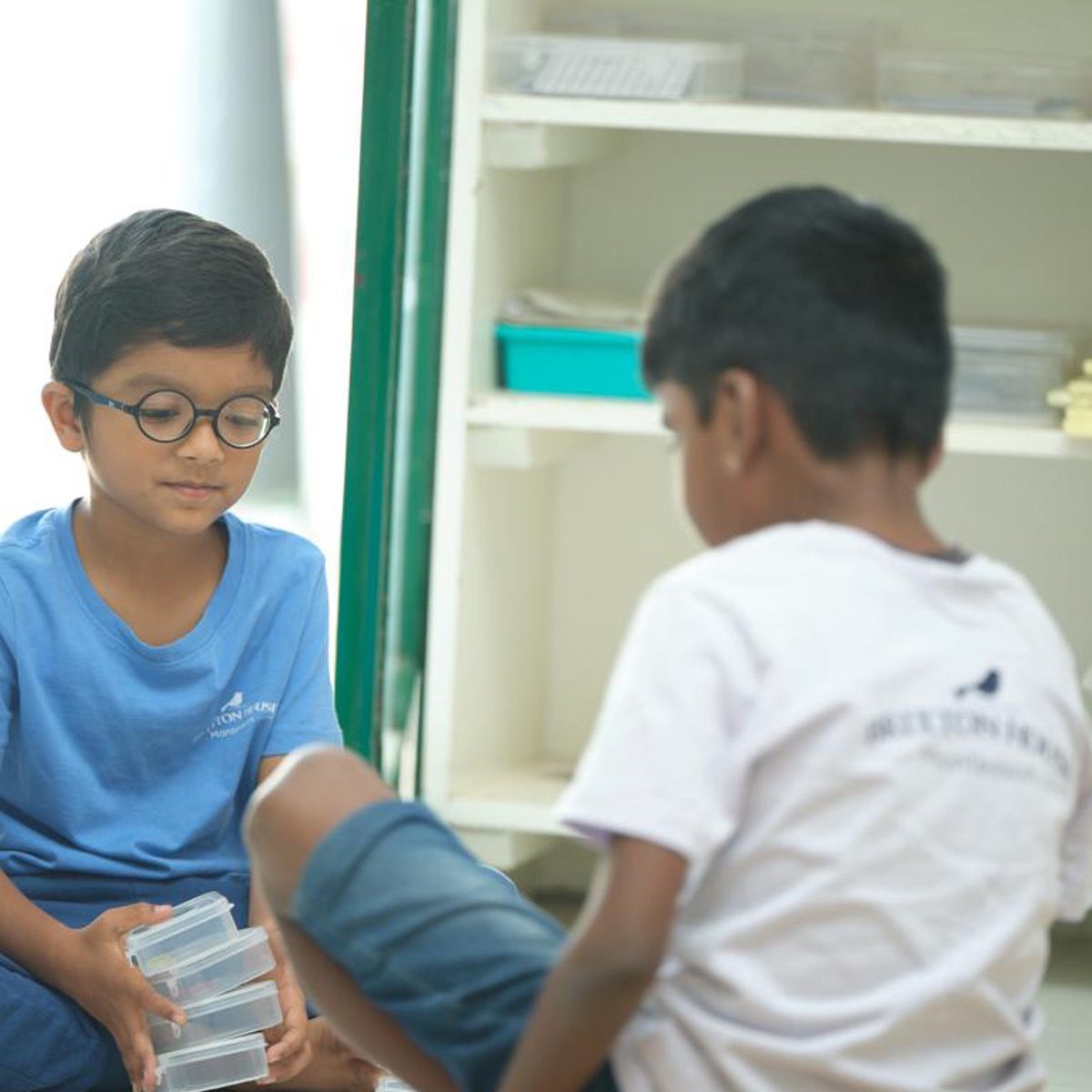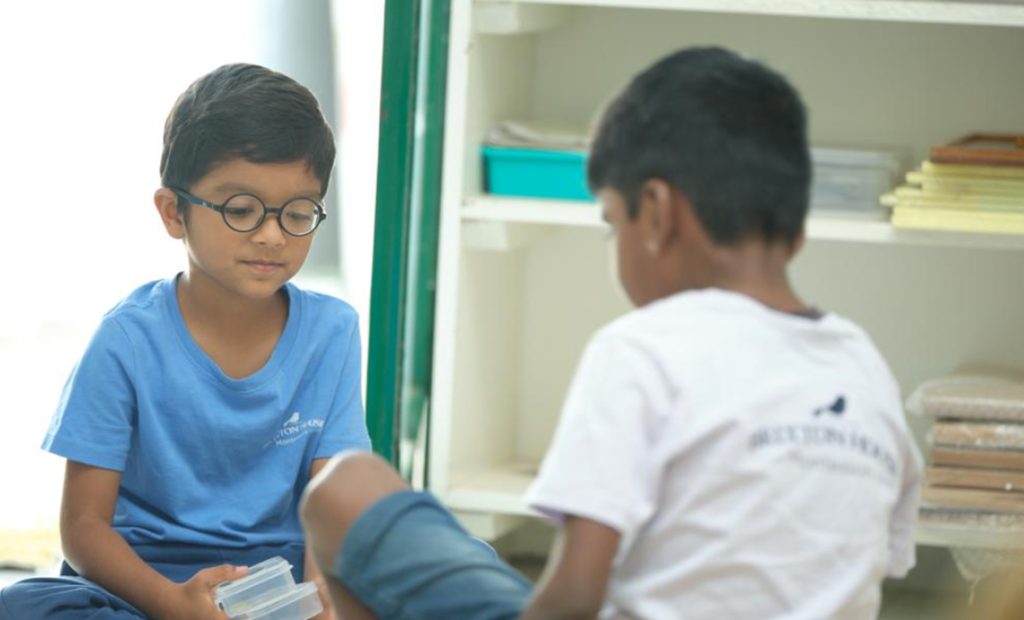What We Offer

Learning for Life
Schools help form the building blocks of the mind. In an environment where children learn to be independent and collaborative, schools also help build the foundational skills that will benefit students life-long.


Primary Montessori – Nursery & Early Years
Our Primary Classrooms are designed to meet the ever-changing needs of the two- to six-year-old child. Beauty and order play important roles in creating the child size environment which is carefully designed to encourage curiosity and a love for learning.
Children in a Primary Montessori Classroom learn to manoeuvre about their classroom with confidence, exploring concepts in arithmetic, reading and writing, geography, science and activities of daily life. Each school day includes active outside play time in our child-friendly Play Area.
Sensorial Learning
Movement and motor control is a critical part of development for young children. Primary teachers offer a variety of opportunities for developing gross motor skills including balance, motor planning, bilateral and eye-hand coordination. These opportunities are reinforced in the classroom and playground daily.
Our lawns provide our young children who are sensorial learners the opportunity to connect with Mother Nature. They could watch insects at work, droplets on leaves, smell the rain and explore the environment about them, kindling a life-long sense of healthy curiosity and learning.


A Typical Day at Brixton House

Yoga & Silambam
The day starts early at 8.30 am. On Mondays and Thursdays, we begin with Yoga for twenty minutes, to help in improving focus and attention span before the little ones move into their classroom. On Tuesdays and Fridays, we have Silambam, a martial art of Tamil Nādu, being taught by a qualified Silambam artist, for an hour. The traditional martial art helps improve breath control and concentration in the little ones.

Choose an Activity
Children then settle down with their head teacher to discuss their previous day, their common problems and achievements. They choose work independently or in small groups. In a classroom of 10 children, 10 different activities could be going on at the same time. This leaves every child with the opportunity to choose an activity they are interested in and work with that activity for as long as they want to. The teacher in a Montessori environment is only a facilitator giving individual or small group presentations and making observations.

Group Interaction
Before lunch break, the class comes together as one group. During this 30-minute session, they sing songs, talk about the weather and calendar and projects important to the entire group. At 12:30 pm, the children get ready for lunch. Children who stay on in school for lunch set their tables and enjoy lunch with their classmates before cleaning up and getting ready for the afternoon.

Second Language Study
Younger children may sleep or rest after lunch and the older children choose materials to work with in the afternoon. They have a 30-minute session every day for second language study before they break for the day at 2:30 pm. With so much happening, in a stress-free, happy environment, the little ones will be raring to go to school each day.

